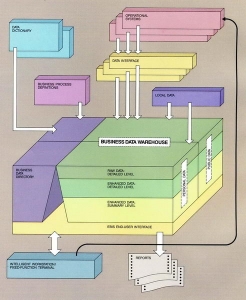 February 1988
February 1988
Barry wrote the first published article describing a data warehouse architecture in 1988, based on his work in IBM Europe’s internal IT division in the preceding years.
Original publication: “An architecture for a business and information system”, B. A. Devlin, P. T. Murphy, IBM Systems Journal, Volume 27, Number 1, Page 60 (1988)
Abstract
The transaction-processing environment in which companies maintain their operational databases was the original target for computerization and is now well understood. On the other hand, access to company information on a large scale by an end user for reporting and data analysis is relatively new. Within IBM, the computerization of informational systems is progressing, driven by business needs and by the availability of improved tools for accessing the company data. It is now apparent that an architecture is needed to draw together the various strands of informational system activity within the company. IBM Europe, Middle East, and Africa (E/ME/A) has adopted an architecture called the E/ME/A Business Information System (EBIS) architecture as the strategic direction for informational systems. EBIS proposes an integrated warehouse of company data based firmly in the relational database environment. End-user access to this warehouse is simplified by a consistent set of tools provided by an end-user interface and supported by a business data directory that describes the information available in user terms. This paper describes the background and components of the architecture of EBIS.

Leave A Comment